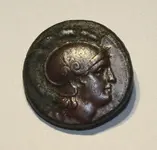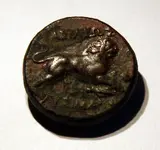Tom_Restorer
Gold Member
- #261
Thread Owner
I use this and Paraloid B72. Depends on the Patina and Object.I have no idea what Tom uses, but I have seen this posted a few times on the website and I got some for myself.
View attachment 2082671
However, I have found that it eats up latex gloves, so you might invest in rubber gloves. I have not tried those yet.
On Iron I use other waxes and cook the Objects in it. Paraloid for Iron is a very bad choise!
If you thin it down to get a natural shining like most museum Restorers do, Paraloid gets micro cracks while drying and where humidity penetrates and causes problems. If you use Aceton for the paraloid it gets even worse because it dries even faster and makes directy cracks in it. After a few years you can literaly fell it and a smooth looking surface feeling rough under your fingers. That are bent up edges of the cracked Paraloid!
The Problem with Renaissance wax is, that it is made from Paraffine and it diffuses in the air, so after a few years it is gone from the objects. Same Problem with paraffine oil.
An Advantage is, if you put in on objects and polish the surface after drying, the unnatural shining disappears after a short time.
Below is a pic that shows what is possible with parafine oil on more than 2000 years old beads.
Problem is, that this treatment has to be done again and again after years.

Last edited:













